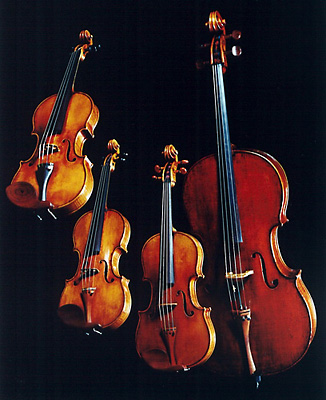Chamber Music Society launches season with charming if lightweight opener
The Chamber Music Society of Lincoln Center opened its 45th season on Tuesday, presenting a string orchestra composed of seventeen of the Society’s season artists.
They led off with Mendelssohn’s Sinfonia No. 13. Completed in 1823, when Mendelssohn was just 14, it displays a startling command of compositional technique, particularly in the extended fugato section that follows the sober beginning. It is a very clever piece, but rather academic and doesn’t exactly leap off the page, which makes it an odd way to launch a season opener.
Aside from some minor ensemble issues in the fugue, the CMS ensemble gave it a slick performance, with a bright, crisp sound, with a silky sheen appropriate to the young Mendelssohn’s late-Classical style.
The players brought that bright sound to bear in Tchaikovsky’s Serenade for Strings, that old (and slightly tired) warhorse of the chamber orchestra rep. The opening theme displayed the glorious, intense, burnished tone that was the ensemble’s greatest asset throughout the night. The development section was unsteady, and while it had plenty of bounce, it would have been helped by a little more pluck to keep it from simply skittering along.
The waltz was utterly, irresistibly charming. At the start it floated with effortless elegance, drawing in the listener with a warmth that was rarely heard elsewhere on the program, but contrasted nicely with the piercing sound that was their go-to in the first movement.
In the “Élégie” their playing was sweet and lyrical, and a controlled vibrato kept it tasteful. The interpretation was carefree, which isn’t quite right for this movement. It is certainly picturesque and pleasant, but there needs to be passionate devotion behind it as well (it is, after all, an “elegy), and this performance felt detached. This nagging problem came up once again in the finale—after a delightfully wistful opening, there was not enough spirit in the Allegro con spirito, due in part to dull articulation. Only in the restatement of the heroic opening theme did they get around to some really gutty playing.
Bartók’s Divertimento offered a hope of something meatier, but still the players held back, as though they were afraid of sounding too “ugly.” The fact is, Bartók has an ugly side, and to shrink from it is to deny the music part of its visceral power. In the first movement had no trouble finding sentimentality, but as in the Tchaikovsky, vigor and electricity were scarce, as was any real sense of spontaneity. The interpretation seemed to adhere very strictly to the markings, without too much investment behind it.
The slow movement was more convincing, as the musicians engaged more fully with the unease that underlies the deceptive simplicity of the writing. They made a potent stew of Bartók’s pungent tonality, interrupted by piercing chords that drew on the full power of the ensemble.
The very beginning of the finale was sorely lacking in brio. As the movement went along we finally heard the simmer that had been missing for most of the night. Much of the energy came from the visceral playing of violinist Ida Kavafian, who seemed to bring a hint of jazz spirit into her solos. The group played one encore, a Britten tribute: “Playful Pizzicato” from the Simple Symphony in a joyful rendition that lived up to its title.
The Chamber Music Society of Lincoln Center continues its season 5 p.m. Sunday with a program of piano quartets by Mozart, Turina, and Brahms at Alice Tully Hall. chambermusicsociety.org
